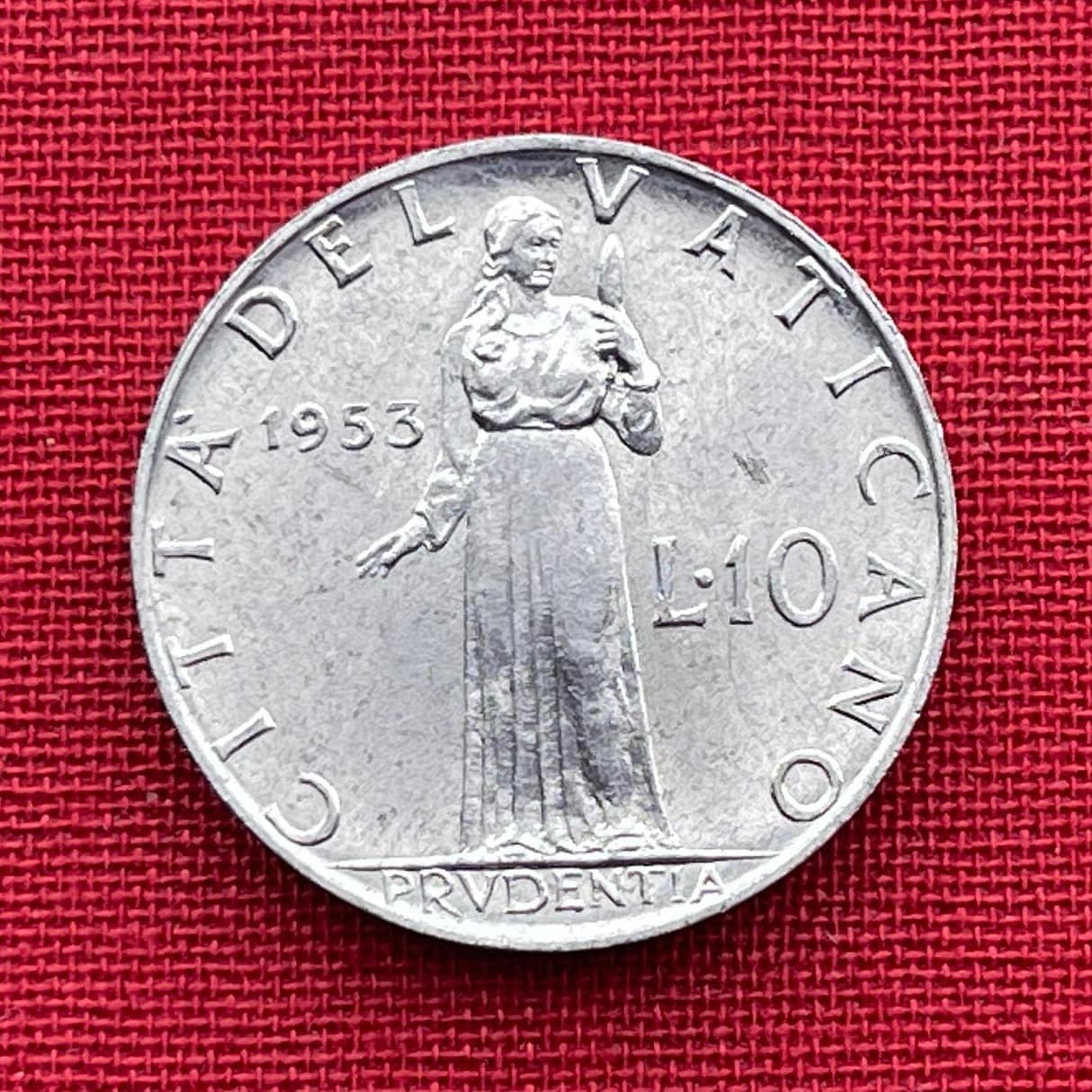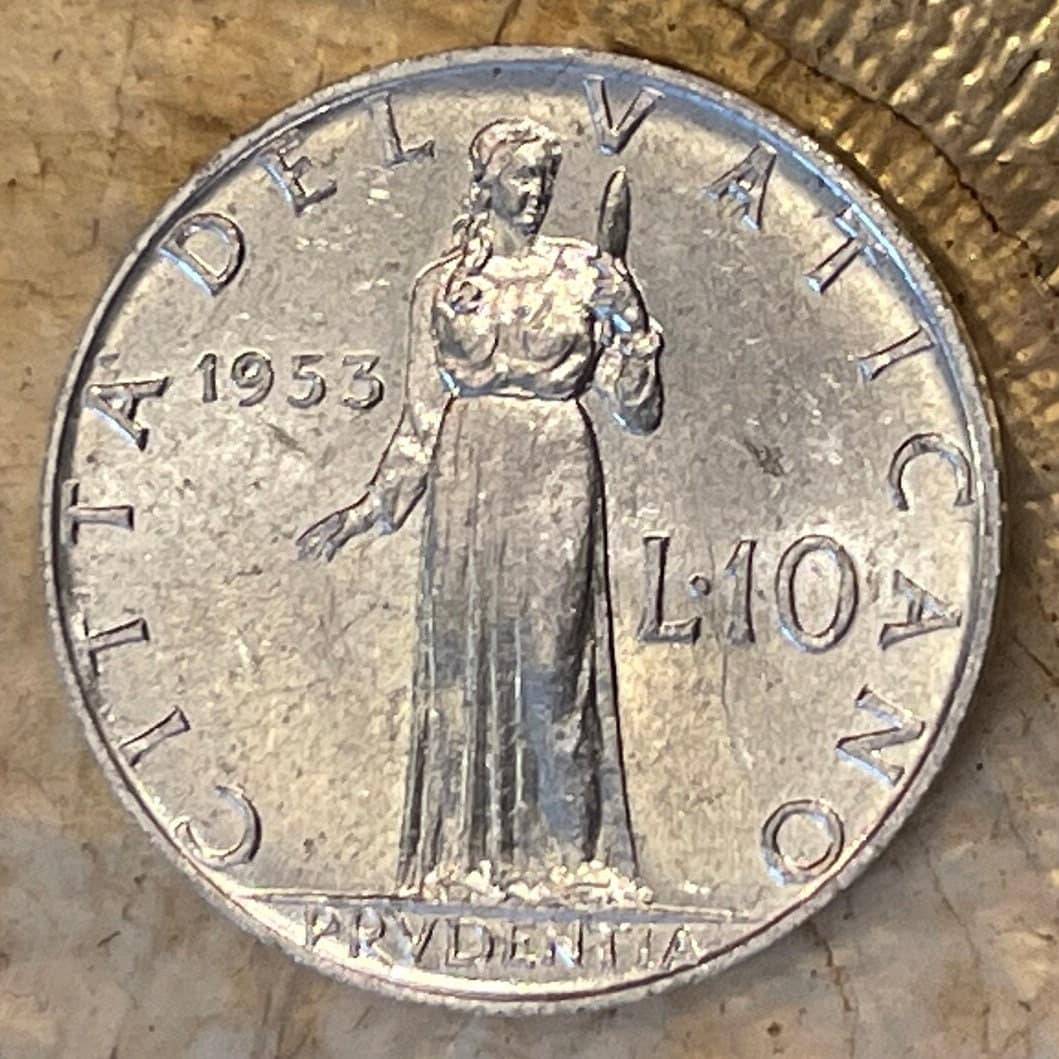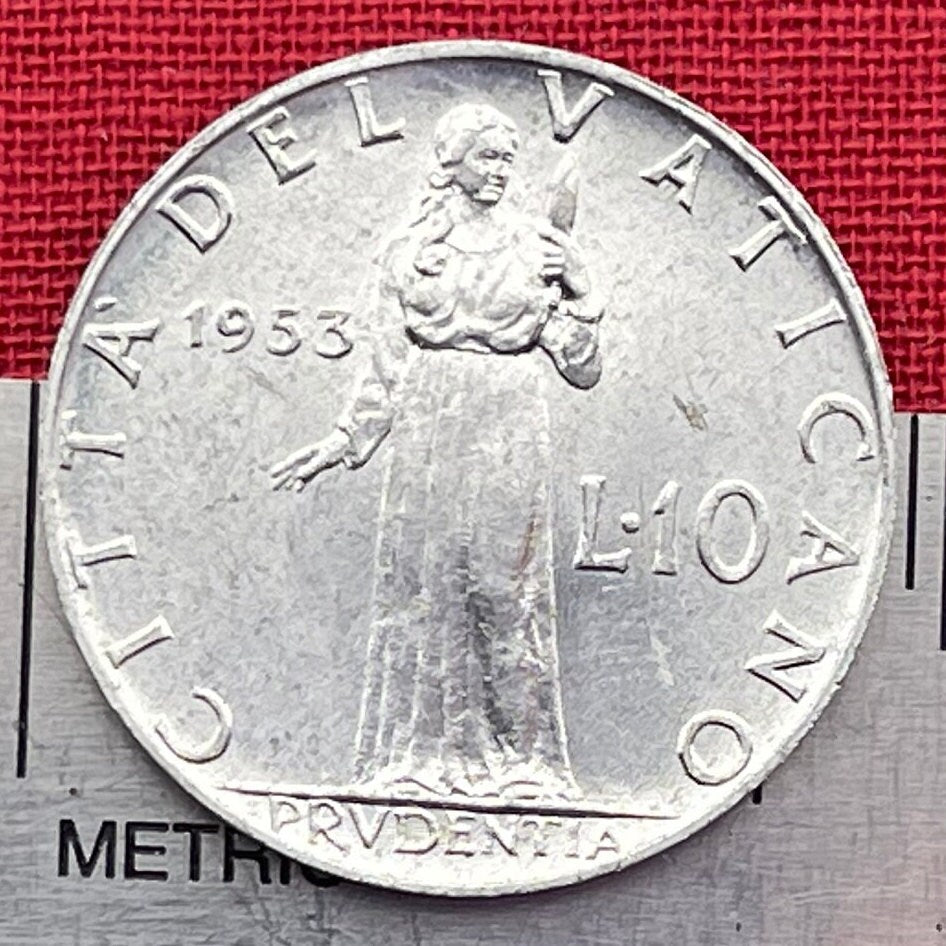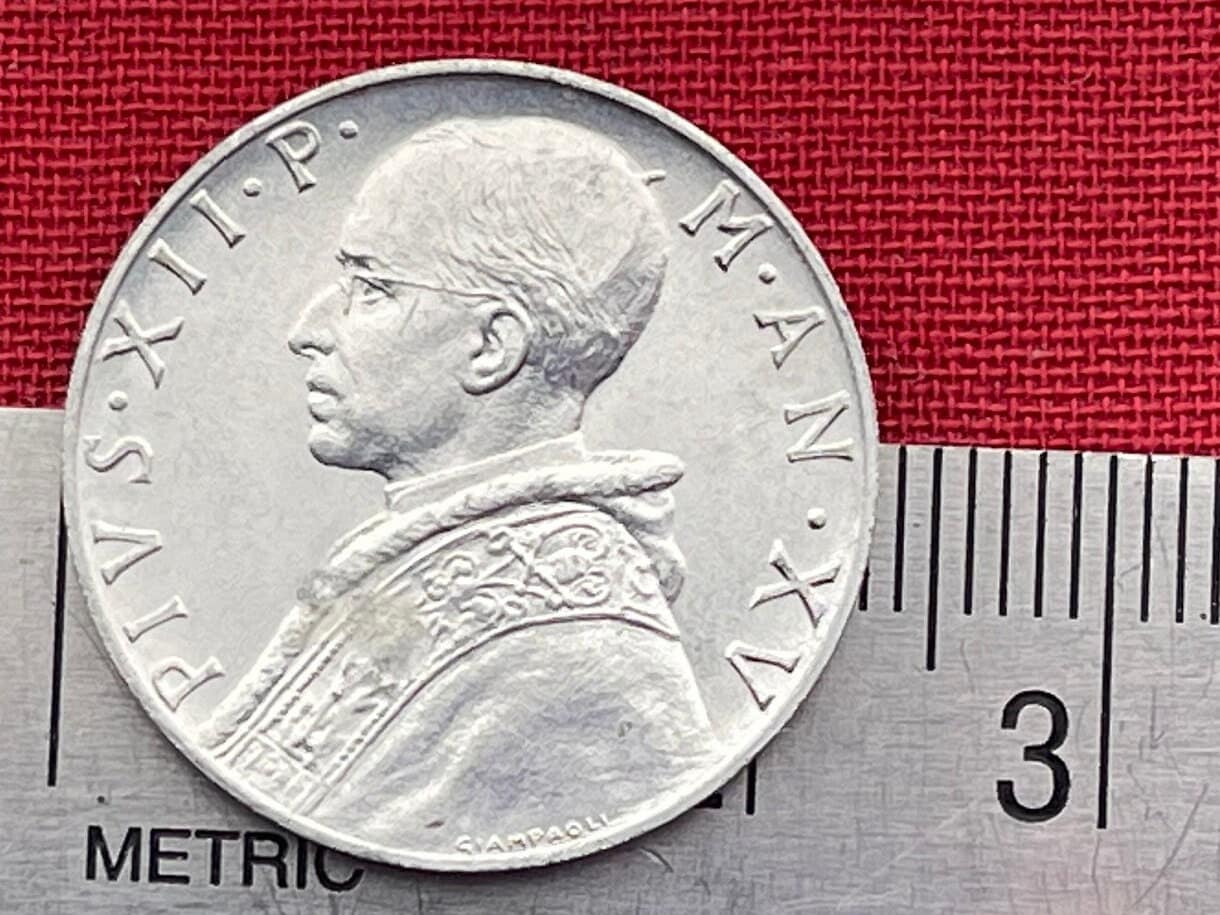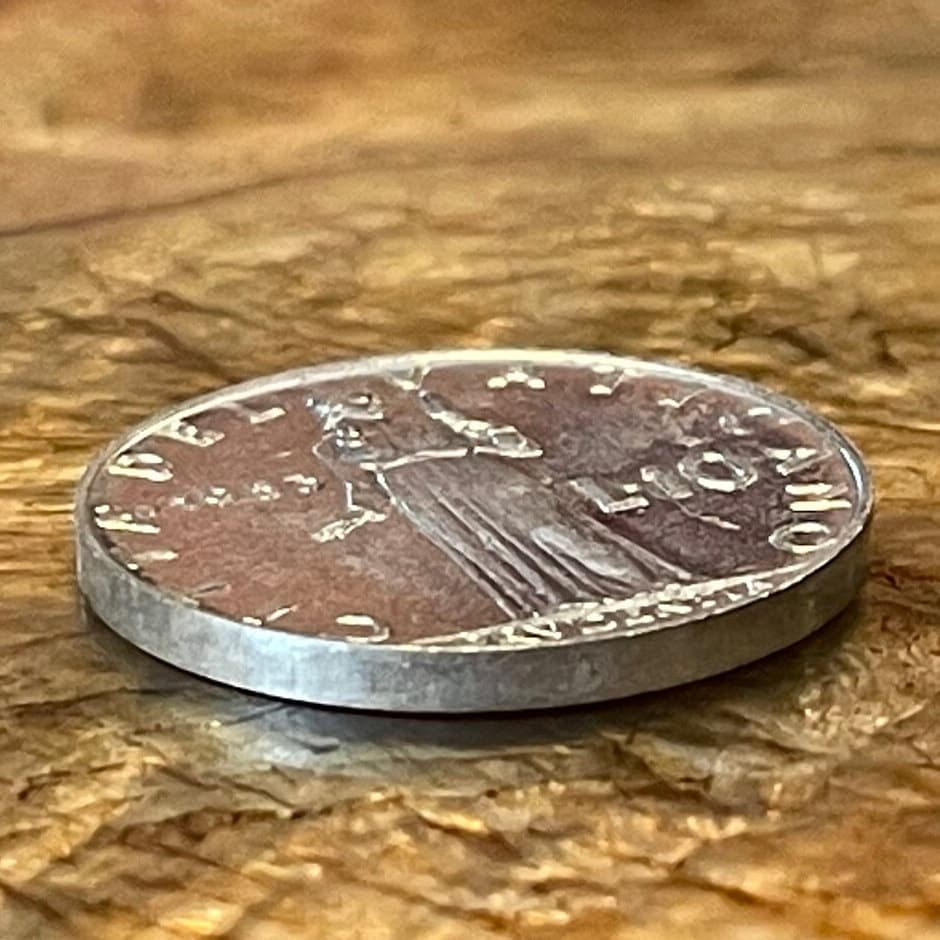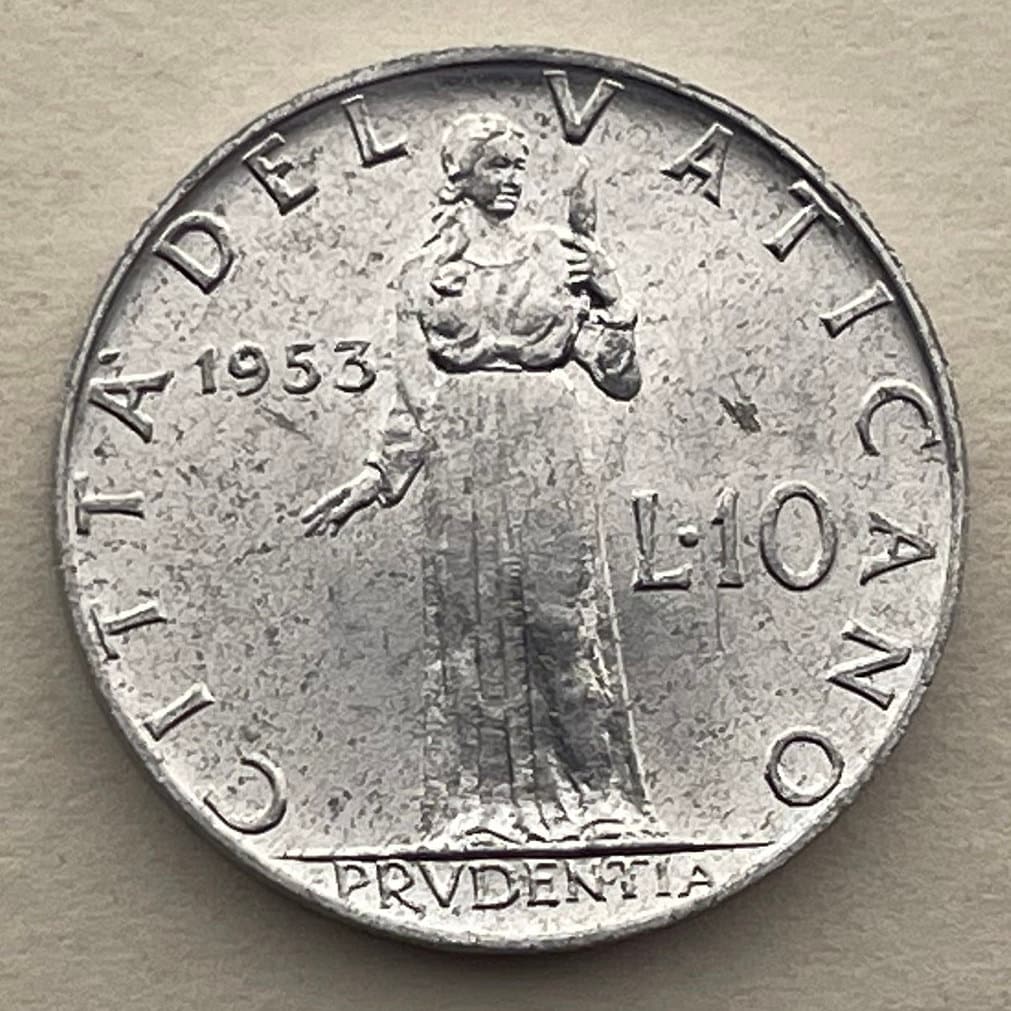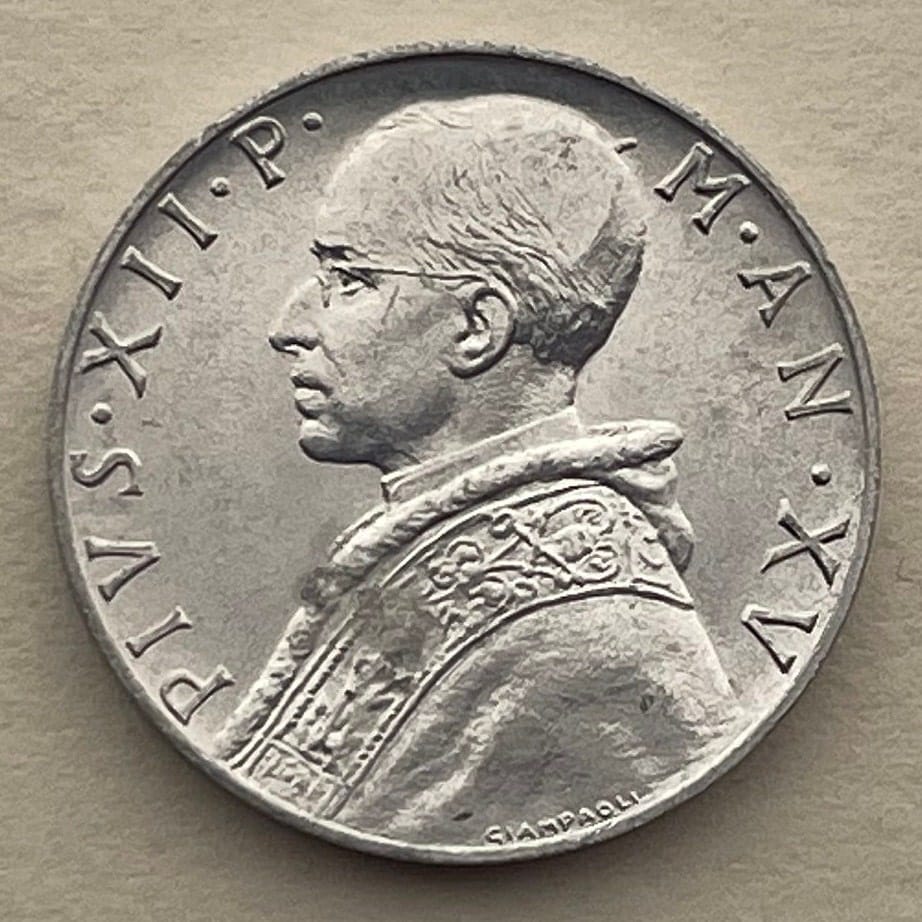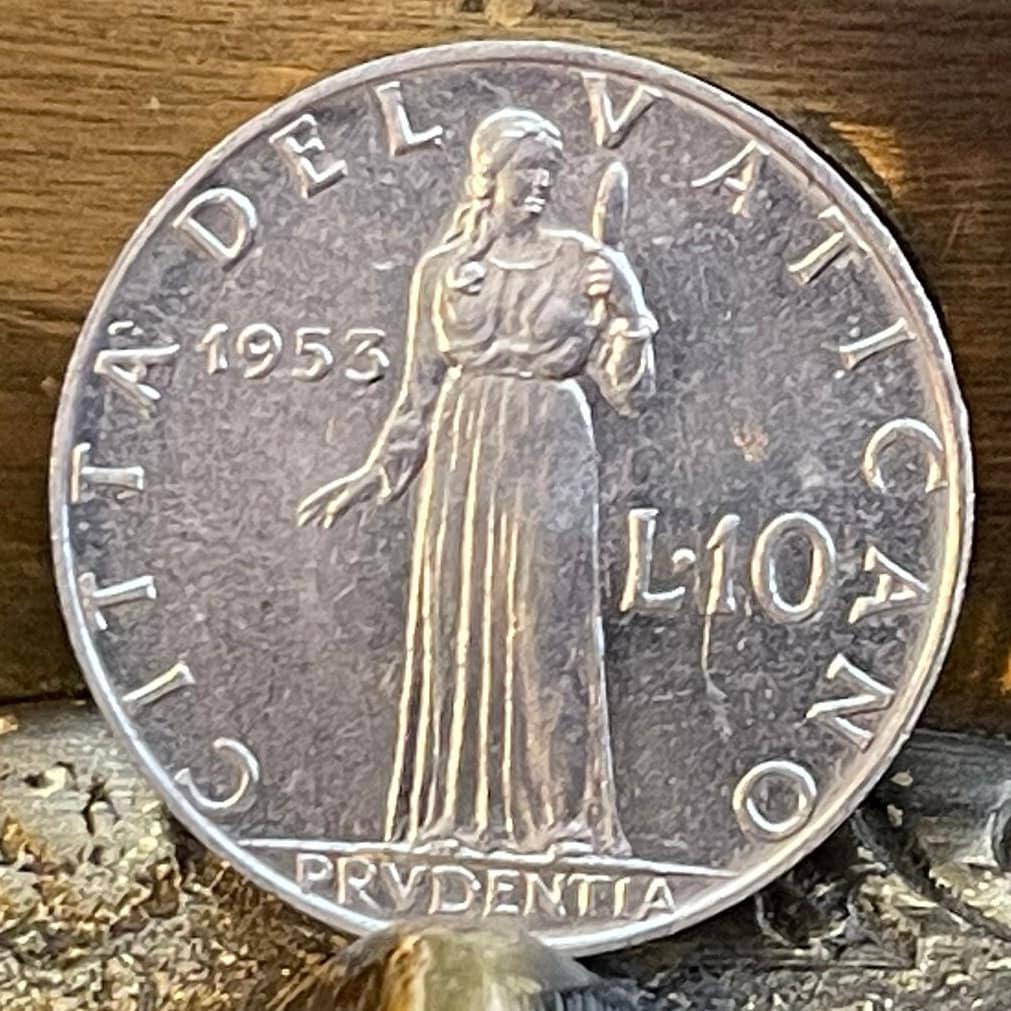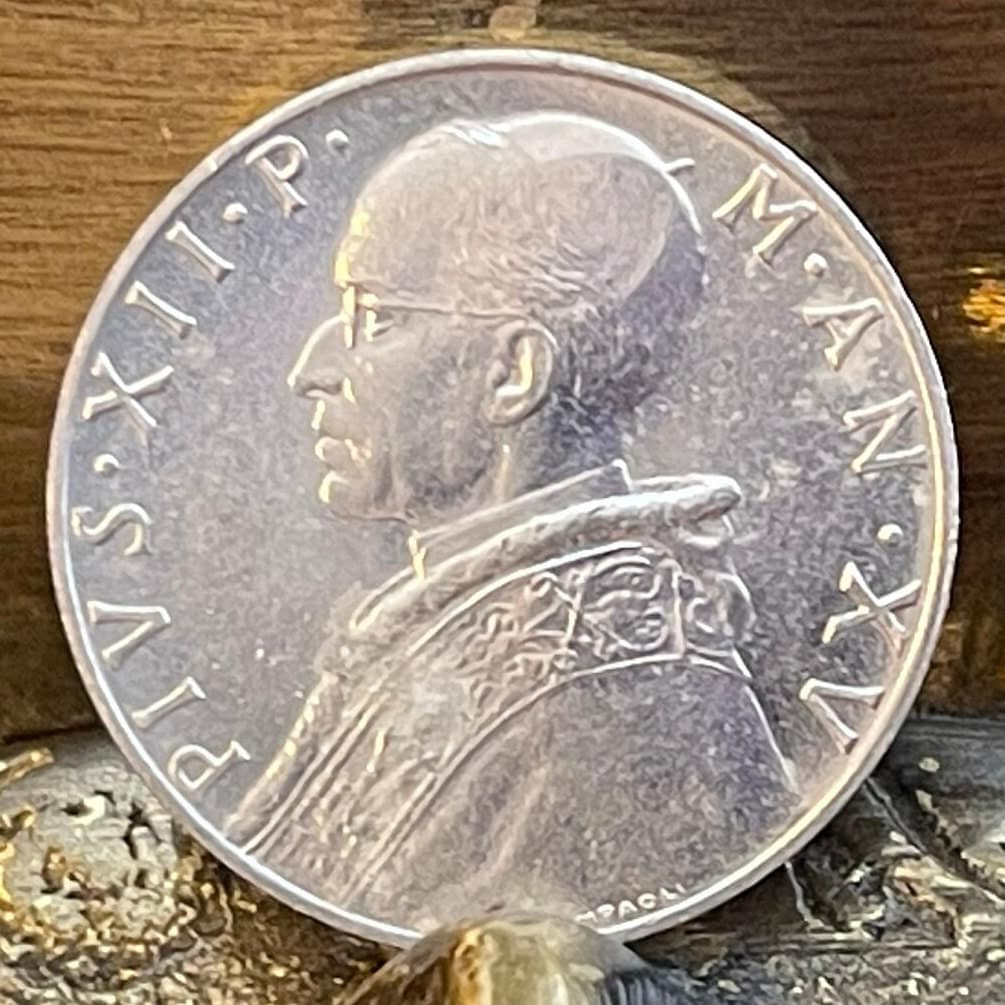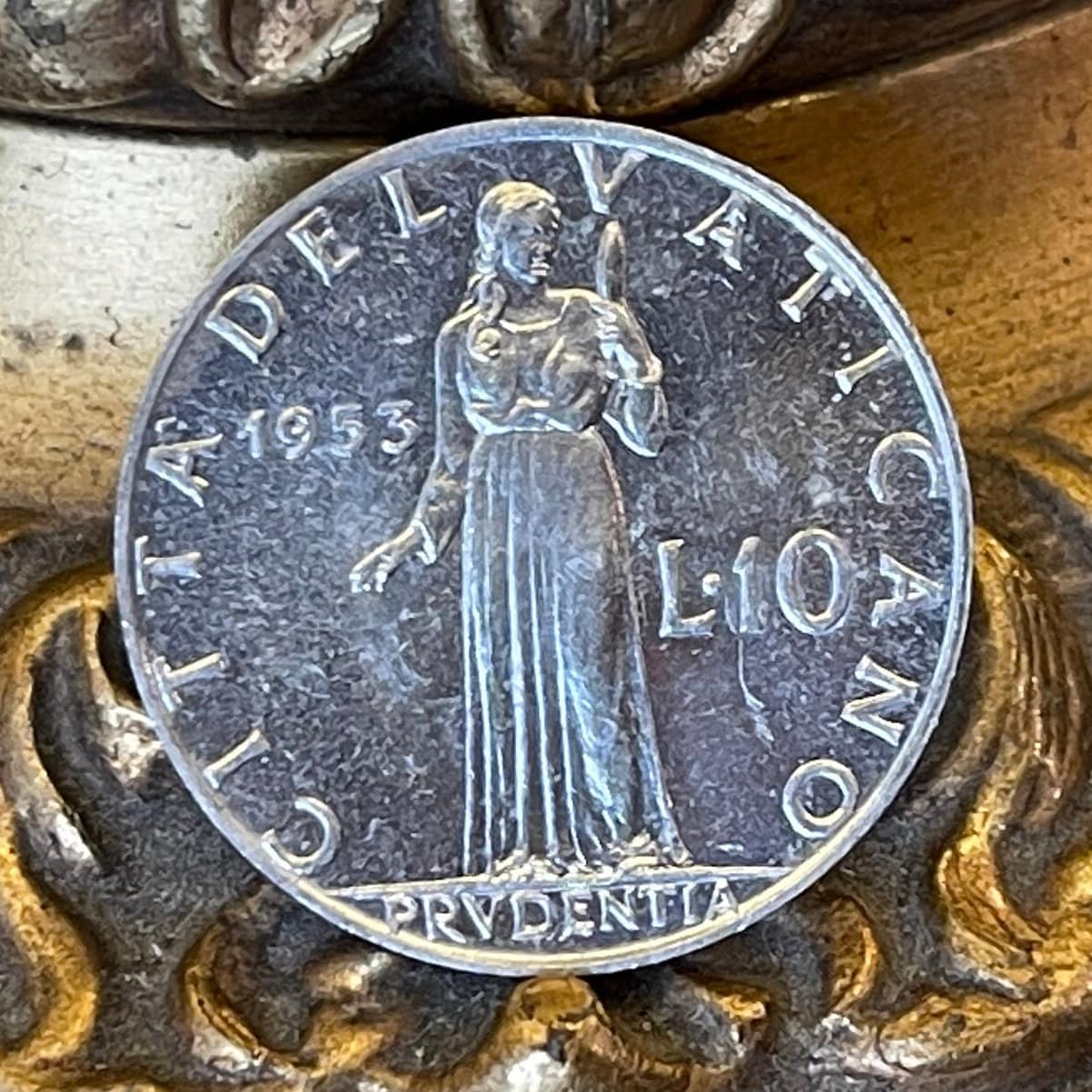elemintalshop
Cardinal Virtue Prudence & Pope Pius XII 10 Lire Vatican City Authentic Coin Money for Jewelry and Craft Making (Prudentia)
Cardinal Virtue Prudence & Pope Pius XII 10 Lire Vatican City Authentic Coin Money for Jewelry and Craft Making (Prudentia)
Couldn't load pickup availability
Cardinal Virtue Prudence & Pope Pius XII 10 Lire Vatican City Authentic Coin Money for Jewelry and Craft Making (Prudentia)
Reverse: Prudence standing and date divides value
Prudentia is an allegorical female personification of the virtue, with the attribute of a mirror.
Lettering: CITTA DEL VATICANO
L·10
PRVDENTIA
Obverse: Bust of Pius XII
Lettering: PIVS·XII·P·M·AN·XIV
Features
Issuer Vatican City
Pope Pius XII (1939-1958)
Type Standard circulation coin
Years 1951-1958
Value 10 Lire (10 VAL)
Currency Lira (1929-2001)
Composition Aluminium
Weight 1.6 g
Diameter 23.4 mm
Thickness 1.8 mm
Shape Round
Orientation Coin alignment ↑↓
Demonetized Yes
Number N# 3935
References KM# 52
Wikipedia:
Cardinal virtues are four virtues of mind and character in both classical philosophy and Christian theology. They are Prudence, Justice, Fortitude, Temperance. They form a virtue theory of ethics. The term cardinal comes from the Latin cardo (hinge); virtues are so called because they are regarded as the basic virtues required for a virtuous life.
These principles derive initially from Plato in Republic Book IV, 426–435 (see also Protagoras 330b, which also includes piety (hosiotes)). They were also recognized by the Stoics. Cicero expanded on them, and Ambrose, Augustine of Hippo, and Thomas Aquinas adapted them while expanding on the theological virtues.
*****
Wikipedia:
Prudence (Latin: prudentia, contracted from providentia meaning "seeing ahead, sagacity") is the ability to govern and discipline oneself by the use of reason. It is classically considered to be a virtue, and in particular one of the four Cardinal virtues (which are, with the three theological virtues, part of the seven virtues). Prudentia is an allegorical female personification of the virtue, whose attributes are a mirror and snake, who is frequently depicted as a pair with Justitia, the Roman goddess of Justice.
The word derives from the 14th-century Old French word prudence, which, in turn, derives from the Latin prudentia meaning "foresight, sagacity". It is often associated with wisdom, insight, and knowledge. In this case, the virtue is the ability to judge between virtuous and vicious actions, not only in a general sense, but with regard to appropriate actions at a given time and place. Although prudence itself does not perform any actions, and is concerned solely with knowledge, all virtues had to be regulated by it. Distinguishing when acts are courageous, as opposed to reckless or cowardly, is an act of prudence, and for this reason it is classified as a cardinal (pivotal) virtue.
In modern English, the word has become increasingly synonymous with cautiousness. In this sense, prudence names a reluctance to take risks, which remains a virtue with respect to unnecessary risks, but, when unreasonably extended into over-cautiousness, can become the vice of cowardice.
In the Nicomachean Ethics, Aristotle gives a lengthy account of the virtue phronesis (Ancient Greek: ϕρόνησις), traditionally translated as "prudence", although this has become increasingly problematic as the word has fallen out of common usage. More recently ϕρόνησις has been translated by such terms as "practical wisdom", "practical judgment" or "rational choice".
******
Wikipedia:
Pope Pius XII (Italian: Pio XII), born Eugenio Maria Giuseppe Giovanni Pacelli (Italian pronunciation: [euˈdʒɛːnjo maˈriːa dʒuˈzɛppe dʒoˈvanni paˈtʃɛlli]; 2 March 1876 – 9 October 1958), was head of the Catholic Church and sovereign of the Vatican City State from 2 March 1939 until his death in 1958. Before his election to the papacy, he served as secretary of the Department of Extraordinary Ecclesiastical Affairs, papal nuncio to Germany, and Cardinal Secretary of State, in which capacity he worked to conclude treaties with European and Latin American nations, such as the Reichskonkordat with Nazi Germany.
While the Vatican was officially neutral during World War II, the Reichskonkordat and his leadership of the Catholic Church during the war remain the subject of controversy—including allegations of public silence and inaction about the fate of the Jews. Pius employed diplomacy to aid the victims of the Nazis during the war and, through directing the Church to provide discreet aid to Jews and others, saved hundreds of thousands of lives. Pius maintained links to the German Resistance, and shared intelligence with the Allies. His strongest public condemnation of genocide was, however, considered inadequate by the Allied Powers, while the Nazis viewed him as an Allied sympathizer who had dishonoured his policy of Vatican neutrality. After the war, he advocated peace and reconciliation, including lenient policies towards former Axis and Axis-satellite nations.
During his papacy, the Church issued the Decree against Communism, declaring that Catholics who profess Communist doctrine are to be excommunicated as apostates from the Christian faith. The Church experienced severe persecution and mass deportations of Catholic clergy in the Eastern Bloc. He explicitly invoked ex cathedra papal infallibility with the dogma of the Assumption of Mary in his Apostolic constitution Munificentissimus Deus. His magisterium includes almost 1,000 addresses and radio broadcasts. His forty-one encyclicals include Mystici corporis, the Church as the Body of Christ; Mediator Dei on liturgy reform; and Humani generis, in which he instructed theologians to adhere to episcopal teaching and allowed that the human body might have evolved from earlier forms. He eliminated the Italian majority in the College of Cardinals in 1946.
After he died in 1958, Pope Pius XII was succeeded by John XXIII. In the process toward sainthood, his cause for canonization was opened on 18 November 1965 by Paul VI during the final session of the Second Vatican Council. He was made a Servant of God by John Paul II in 1990 and Benedict XVI declared Pius XII Venerable on 19 December 2009.
Share
